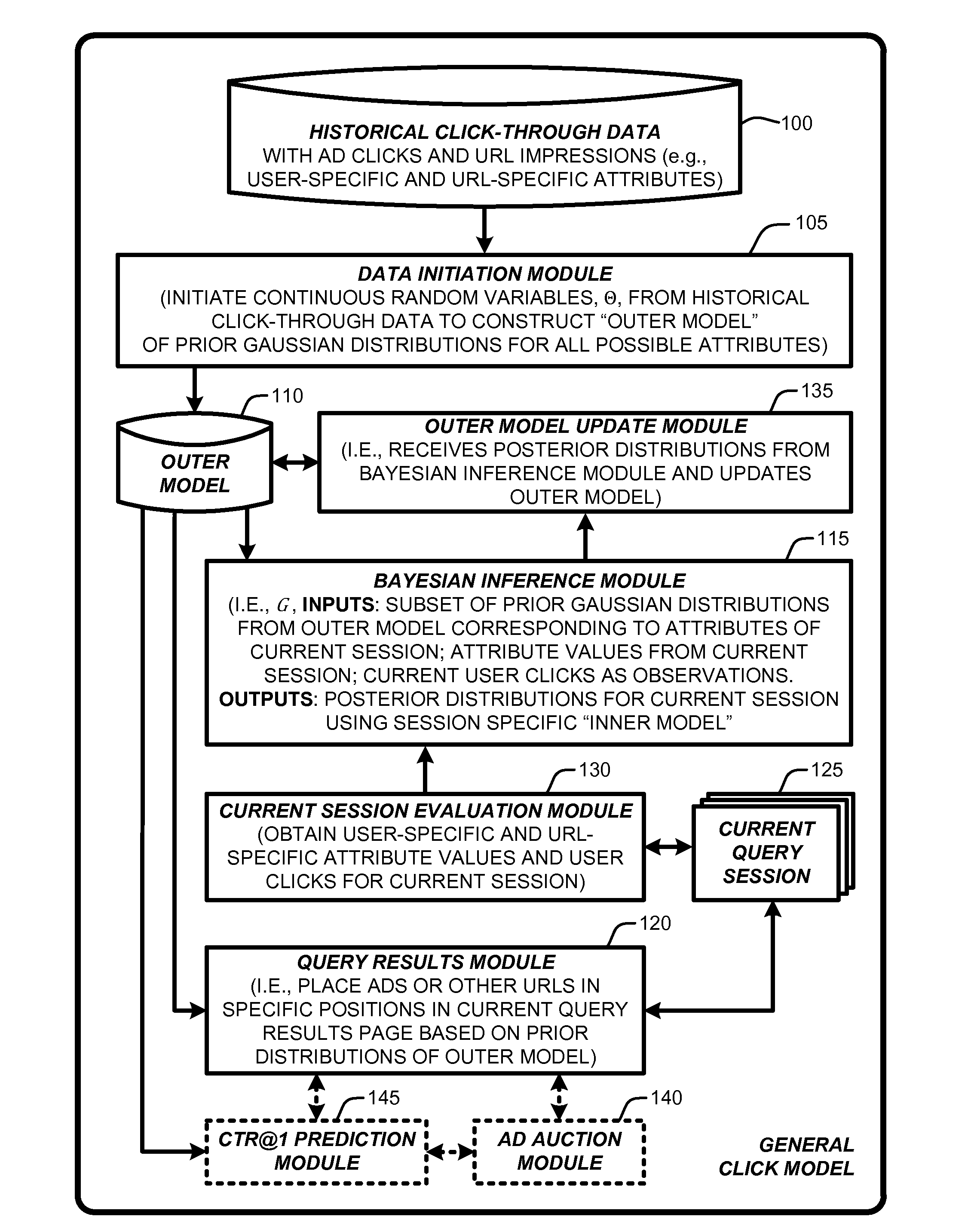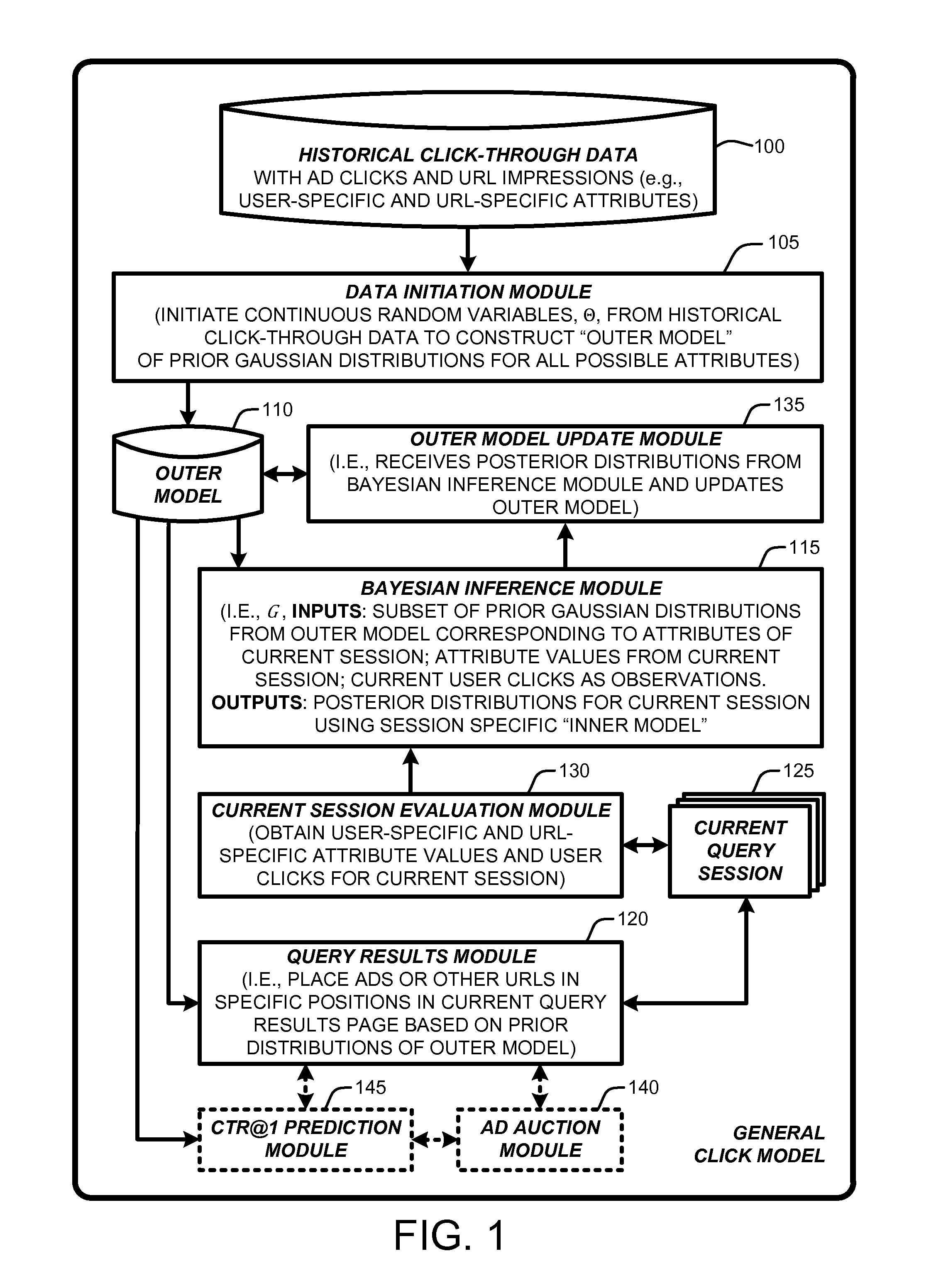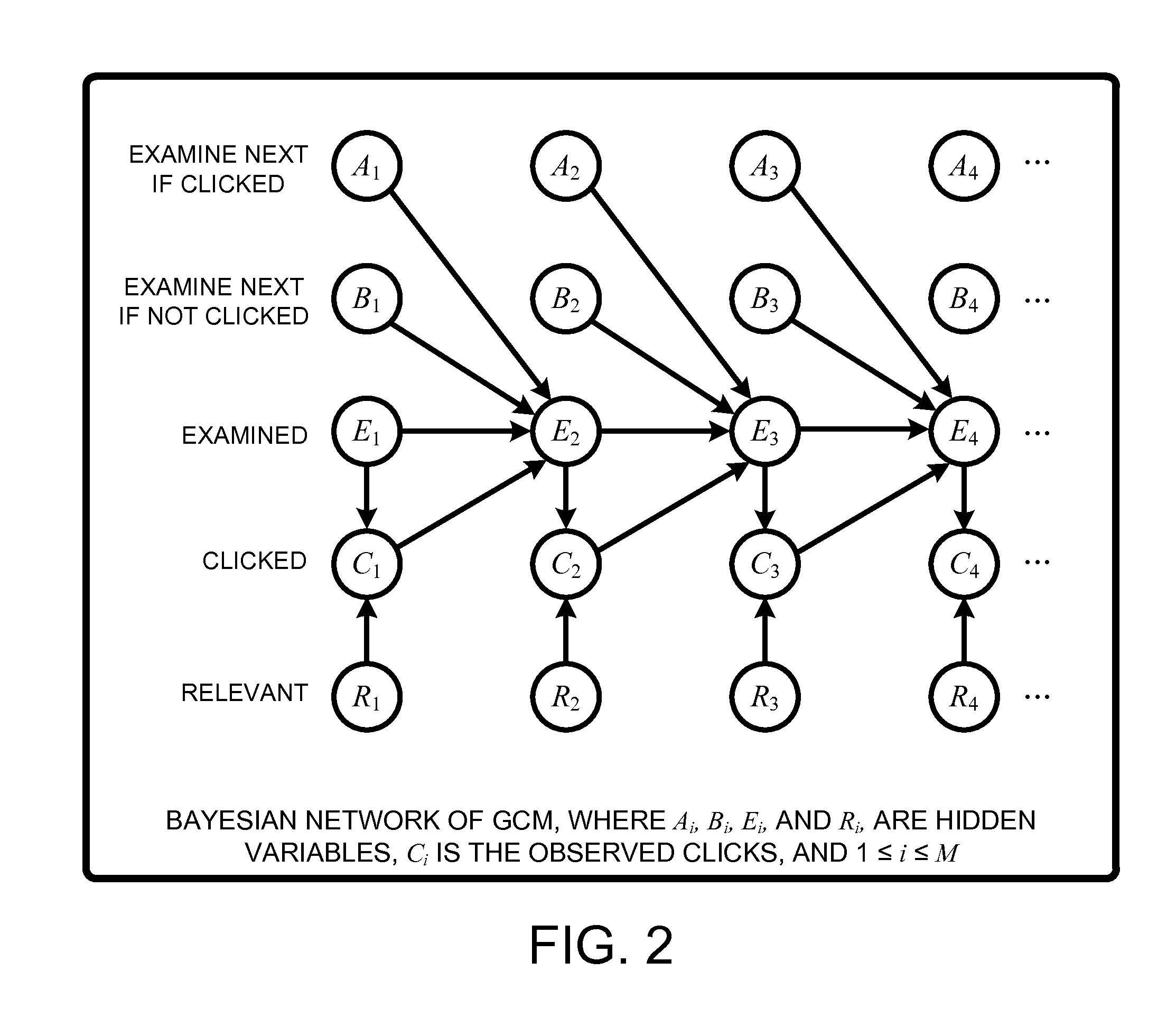Click modeling for URL placements in query response pages
a query response page and click modeling technology, applied in computing models, knowledge representations, instruments, etc., can solve problems such as the inability to provide an exhaustive or complete illustration of every possible embodimen
- Summary
- Abstract
- Description
- Claims
- Application Information
AI Technical Summary
Benefits of technology
Problems solved by technology
Method used
Image
Examples
Embodiment Construction
[0022]In the following description of the embodiments of the claimed subject matter, reference is made to the accompanying drawings, which form a part hereof, and in which is shown by way of illustration specific embodiments in which the claimed subject matter may be practiced. It should be understood that other embodiments may be utilized and structural changes may be made without departing from the scope of the presently claimed subject matter.
1.0 INTRODUCTION
[0023]In general, a “General Click Model” (GCM), as described herein, provides various techniques for using a layered Bayesian to build a click model on multiple attribute values that are shared across queries for use in predicting user click behavior towards URLs displayed on a query results page returned by a search engine. More specifically, the GCM is built upon a Bayesian network wherein an Expectation Propagation (EP) process is used to perform approximate Bayesian inference based on an “outer model” of prior Gaussian d...
PUM
 Login to View More
Login to View More Abstract
Description
Claims
Application Information
 Login to View More
Login to View More - R&D
- Intellectual Property
- Life Sciences
- Materials
- Tech Scout
- Unparalleled Data Quality
- Higher Quality Content
- 60% Fewer Hallucinations
Browse by: Latest US Patents, China's latest patents, Technical Efficacy Thesaurus, Application Domain, Technology Topic, Popular Technical Reports.
© 2025 PatSnap. All rights reserved.Legal|Privacy policy|Modern Slavery Act Transparency Statement|Sitemap|About US| Contact US: help@patsnap.com



